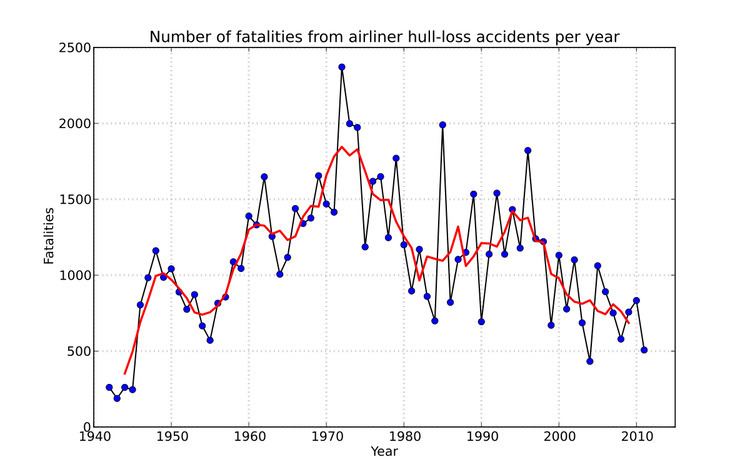 | ||
A hull loss is an aviation accident that damages the aircraft beyond economical repair, resulting in a write-off. The term also applies to situations when the aircraft is missing, the search for its wreckage is terminated or when the wreckage is completely inaccessible.
"Hull losses per 100,000 flight departures" has been a long-used statistical criterion. From 1959 to 2006, throughout almost the entire jet aircraft era, 384 of 835 hull losses, or 46%, were nonfatal. Airlines typically buy insurance to cover hull loss on a 12-month basis. Before the September 11 attacks in 2001, the typical insurance amount for hull loss could reach $250 million, but since then demands for higher liability have increased.
Constructive hull loss factors other incidental expenses beyond repair, such as salvage, logistical costs of repairing the non-airworthy aircraft within the confines of the incident site, recertifying the aircraft, etc. Insurance policies covering any asset that is subject to depreciation, typically pay the insured a fraction of the cost of replacing the property, meaning they could become "total losses" even though some residual value remains.
